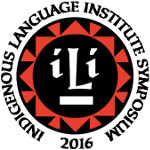We will regularly update this page. Please visit often!
Online Registration click here
PDF ILIS2016 Information Brochure with Registration form Click here
Sponsorship information click here
Vendor information and registration click here
Online Registration click here
PDF ILIS2016 Information Brochure with Registration form Click here
Sponsorship information click here
Vendor information and registration click here

We will continue to update this list as the presenters send us their titles of the presentations.
|